PREAMBLE
In the statement of objects and reasons in introducing the Direct Tax Vivad se Vishwas Act, 2020, [THE ACT in short] the FM said that over the years, the pendency of appeals filed by taxpayers as well as Government has increased due to the fact that the number of appeals that are filed is much higher than the number of appeals that are disposed. As a result, a huge amount of disputed tax arrears is locked-up in these appeals. As on the 30th November, 2019, the amount of disputed direct tax arrears is Rs. 9.32 lakh crores. Considering that the actual direct tax collection in the financial year 2018-19 was Rs.11.37 lakh crores, the disputed tax arrears constitute nearly one year direct tax collection.
One should introspect oneself the reasons for such high number appeals filed and the reasons for pendency of such large number of appeals. The reasons being larger number of scrutiny cases selected year after year and the additions made for various reasons and uninterrupted litigation both the sides. The data of Appeals for the AY 2017-18 being the year relevant to demonetization year 2016, and the quantum of appeals is still not available. There will be a quantum jump in the data both being the number and quantum if Ay 2017-18 is considered.
This is the position, even after increasing the threshold limit for appeals before the Tribunal to Rs 50 lakhs, Rs 1 cr to HC and Rs 2 cr to SC and a large number of revenue appeals were dismissed due to such hike in the monetary limit. Else, the situation would have been far different.
Also Read –
Unanswered FAQs on Direct Tax Vivad se Vivadh Act 2020- Part I
FAQs on Vivad Se Vishwas – Questions Unanswered- Part II
Now, realizing the cost of Appeals, the FM said that Tax disputes consume copious amount of time, energy and resources both on the part of the Government as well as taxpayers. Moreover, they also deprive the Government of the timely collection of revenue. Therefore, there is an urgent need to provide for resolution of pending tax disputes. This will not only benefit the Government by generating timely revenue but also the taxpayers who will be able to deploy the time, energy and resources saved by opting for such dispute resolution towards their business activities. While the intent is laudable, for timely collection of revenues, the Bill should have been introduced way back in Sept 2019 on the lines of Sabka Vishwas (Legacy Dispue Resolution) Scheme [SVLDRS].
The FM also made a mention of the intention of the Government to decriminalize the offences of civil in nature and first such move was in amending the Companies Act, 2013 and now intend to proceed under the Act. Through this Act, there is an immunity from prosecutions only for the declarants under the Act, only for a certain period, not across the board for all and no attempt of permanency is made in this direction by amending the Act. Extract of the speech is given below:
Para 82 of Speech. There has been a debate about building into statutes, criminal liability for acts that are civil in nature. Hence, for Companies Act, certain amendments are proposed to be made that will correct this. Similarly, other laws would also be examined, where such provisions exist and attempts would be made to correct them.
In Para 126, of the Speech, the FM said “In the last budget, Sabka Vishwas Scheme was brought in to reduce litigation in indirect taxes. It resulted in settling over 1,89,000 cases.” However, as per PIB “The total number of settlements done under the Sabka Vishwas (Legacy Dispute Resolution Scheme, 2019) as on dated 05.02.2020 are 49,534 and amount involved in these cases is 24,970 crores. [Posted On: 10 FEB 2020 5:25PM by PIB Delhi]
On a careful consideration the Bill, various points emerge for discussions and deliberations and hope, that the views are taken into consideration before it becomes the law.
1. STATUS OF APPEAL
1.1 The specified date for the purpose of section 2(1)(n) is 31st Jan 2020, as on which date the appeal should be pending to be eligible. It is possible that an appeal filed even on 31-1-2020 is also eligible. The point for consideration is what is the status of the declaration for an appeal filed on 31-1-2020 and the same is dismissed by the Appellate Authority for various reasons of deficiencies such as delay etc., Once the Appeal is dismissed subsequently, the status of the declaration is void ab initio.
1.2 Another point for consideration is if the Designated Authority determine, by an order, the amount payable within a period of fifteen days from the date of receipt of the declaration and subsequently if the Appeal is dismissed, the consequences are not visualized. The Appellate Authority is a quasi or a Judicial independent Authority and can function without any interference by any Ministry or Department of the Government of India in the discharge of the functions entrusted to it by law or otherwise.
1.3 Whether the rectification proceedings before the CIT Appeals under 154(1A) proceeding u/s 254(2) before the Tribunal can be considered as an extension of Appeal and be considered as an Appeal pending. What if the rectification proceedings are subsequently allowed or otherwise dismissed?
1.4 What happens to an appeal pending as on Specified date, but disposed of subsequently before making a declaration under the Act.
1.5 Government should clarify whether the appeals in relation to Equalization levy, Security transaction tax, Wealth tax are included.
1.6 Disputed tax u/s 2(j) includes the defaults in Traces, interest, late filing fee etc., determined u/s 200A or 206CB are also covered if disputed.
2.0 OBJECTS – RESOLUTION OF DISPUTES, REVENUE COLLECTION VS TIME LIMITS.
2.1 As said in the speech by the FM, the objects are resolution of disputes for timely revenue to the Govt but also the taxpayers who will be able to deploy the time, energy and resources saved by opting for such dispute resolution towards their business activities.
The timing of specified dates is such that the appeals filed against the orders of assessment for AY 2017-18 relevant to the previous year 2016-17, during which demonetization took place and the additions made for cash deposits are targeted appeals for tax recovery under the Act.
2.2 However, a large number of high pitch assessments are closed towards the end of Dec 2019 and the assessment orders are received after the 1st Jan 2020, for whom the due date to file an appeal is 30 days of receipt of notice of demand, and those cases who filed appeals within the time limit u/s 249(2)(b), but after 31-1-2020, are outside the scope of the Act, for no reasons of their fault. Ideally, the Act should have the time frame to cover such types of cases in the interest of resolution and tax collection. Hence, the Government may think of extending the specified date keeping in mind the window of time for making a declaration, acceptance and making payment and leaving the procedural formalities of issuing the certificate etc., could happen after 31-3-2020. The Government is also prepared for collection after 31-3-2020 in view of the extended time given under section 3 of the Act.
2.2 UNINTENDED OMISSIONS /EXCLUSIONS
2.2.1 In the type of cases covered under section 270AA where an assessee pays the tax and interest within the time specified in notice of demand u/s 156, and where the assessee’s application for grant of immunity is rejected by the AO, such order is not appealable u/s 246A. In such type of cases, the Assessee has no right of Appeal u/s 246A and hence is not covered under the Act. A glaring denial of justice to such assessees.
2.2.2 Vide Section 9 of the Act, the cases of assessments u/s 153Aor 153C are excluded for the reasons not made clear and the tax collections could have been higher if the equality of law is maintained to all without discriminating.
3.0 TIME FRAME AND TIME LIMITS
3.1 The Act did not specify any time limit for the purpose of filing the declaration u/s 3 of the Act. The Act laid down the specified date for the purpose of an appeal being qualifying for declaration and the varying dates for payments. There is no sun set time for the purpose of filing declaration so that the payment can be made before the date specified. The question for consideration, what happens if the declaration is filed 15 days prior to the due date or on 31-3-2020 / before the last date.
3.2 In the Budget Speech, the FM said that if the payment is made before 30th June 2020, the Assessee is required to pay some additional amount and the amount now being made clear in the Act that it is higher by 10% (110% of the tax). However, in the Act, the Due date in the case of an assessee choosing additional 10%, it is mentioned as the last date and the last date is not defined anywhere in the Bill.
4.0 CLARIFICATIONS AND WAIVER OF RIGHTS
4.1 Tax arrear as defined u/s 2(o) means (i) the aggregate amount of disputed tax, interest chargeable or charged on such disputed tax, and penalty leviable or levied on such disputed tax. Should the word chargeable in relation to interest technically mean chargeable till the Specified date? Where the nature of tax arrear u/s 3 tabulated, relates to disputed interest, disputed penalty of disputed fee, the amount payable u/s 3 is 25% or 30% of disputed interest as the case may be. The definition of disputed interest u/s 2(g) means the interest determined in any case under the Provisions of the Income tax Act, 1961. The question for consideration, whether the disputed interest is the interest determined as per the assessment order under the Income tax, 1961 or interest chargeable till the date of actual payment. This needs to be clear to the declarant prior to filing the declaration. How will the declarant come to know of the interest chargeable under such circumstances?
4.2 As per section 4(5), the declarant shall furnish an undertaking waiving his right, to seek or pursue any remedy or any claim in relation to the tax arrear, may mean that any remedy under any special statue is also waived. For example, compensation or interest received under The Right to Fair Compensation and Transparency in Land Acquisition, Rehabilitation and Resettlement Act, 2013, for which there is no specific provision for exemption under the IT Act, but by way of a Circular an exemption is provided. In such cases, read with the Act, the Appellant looses the right to claim exemption provided under any other statue or circular or notification. It is interesting to be seen with the evolvement of law, whether the undertaking given can amount to taking away of the right of an assessee, which otherwise is available. Such right, remedy or claim may be under any law, in equity, or under any agreement such as DTAA.
4.3 The provisions of section 4(6) states that The declaration under sub-section (1) shall be presumed never to have been made if,—
(a) any material particular furnished in the declaration is found to be false at any stage;
(b) the declarant violates any of the conditions referred to in this Act;
(c) the declarant acts in any manner which is not in accordance with the undertaking given by him under sub-section (5), and in such cases, all the proceedings and claims which were withdrawn under section 4 and all the consequences under the Income-tax Act against the declarant shall be deemed to have been revived.
It is pertinent to note that where the proceedings are withdrawn under section 4(2) and revived under section 4(6)(c) [under specified conditions laid down] the following points emerge for deliberations:
a) Whether the declarant will be informed of such deficiency or violation.
b) Whether such intimation is appealable or can be challenged.
c) Whether the deficiency rectifiable.
d) Whether there is going to be an extension of time to complete the Appeals and extension of time for further consequences.
4.4 As per section 4(7), no appellate forum or arbitrator, conciliator or mediator shall proceed to decide any issue relating to the tax arrear, mentioned in the declaration in respect of which an order has been made under sub-section (1) of section 5 by the designated authority or the payment of sum determined under that section.
Here is a blanket ban on the Appellate Forum to decide on any issue relating to tax arrears mentioned in the declaration, but such blanket ban should have been limited until completion of the closure proceedings under the Act by way of payment and the Designated Authority passing an order to that effect. It is also interesting to note that till such time, the entire proceedings etc., including with regard to stay matters are required to be kept in abeyance. The ban is only on Appellant forums, but not on the Assessing Officers concerned. The Government should actually give instructions to the field officers to take note of such Appellants who desire to seek shelters under the Act and provide shelter from coercive measures to recovery of tax. The blanket ban should also mean to cover stay proceedings before the Appellate Forum since the subsection 7 of section 4 covers payment of sum determined. Otherwise, it amounts to passing on the relief in one hand and taking away in right hand.
4.5 The amount determined under section 5 of this Act is final in all respects and no revision or rectification is possible or provided for. The amount determined payable hereunder is by an order u/s 5(1) of the Direct Tax Vivad se Vishwas Act, 2020. It is not an order for which notice of demand u/s 156 of IT Act, 1961 is required to be given.
In the absence of notice of demand, the revenue will not be able to resort to collection and recovery of tax under Chapter XVII D. The only recourse for non-payment is that all the consequences under the Income-tax Act against the declarant shall be deemed to have been revived.
5.0 TIME AND MANNER OF PAYMENT
5.1 The provisions of section 5 provides for Time and manner of payment.
Sub-section (1) of section 5 states that the designated authority shall, within a period of fifteen days from the date of receipt of the declaration, by order, determine the amount payable by the declarant in accordance with the provisions of this Act and grant a certificate to the declarant containing particulars of the tax arrear and the amount payable after such determination, in such form as may be prescribed.
Reference is invited to the definition of “tax arrear” u/s 2(o) which means,—
(i) the aggregate amount of disputed tax, interest chargeable or charged on such disputed tax, and penalty leviable or levied on such disputed tax; or (ii) disputed interest; or (iii) disputed penalty; or (iv) disputed fee, as determined under the provisions of the Income-tax Act;
Given the above scenario, the designated authority shall determine the amount of tax arrears to be paid only with reference to the assessment order passed and he will not have any discretion to re-determine in a manner other than what is prescribed by reducing the tax arrear by any amount that is recovered subsequently, or by the amount paid for obtaining stay, or any other TDS credit available in 26AS. In this manner, the declarant is likely to pasted with higher tax amount payable than in real terms or real liability. The Board should come out with clarification or instructions that while determining the tax arrear payable, credit for all taxes paid or refunds adjusted or taxes recovered etc., shall be given credit to by the Designated Authority and the Designated Authority before su moto determining the tax arrear payable, should afford an opportunity of hearing to the declarant in order to avoid further long drawn proceedings in disputing the amount determined and seeking of refund of excess amounts paid etc., This is so far the reason that the CPC keeps adjusting the refunds after sending an intimation of adjustment u/s 245 and even after raising objections on the portal, the refunds are getting adjusted and the Assessee has no alternative left with him.
6. IMMUNITY
Subject to the provisions of section 5, the designated authority shall not institute any proceeding in respect of an offence; or impose or levy any penalty; or charge any interest under the Income-tax Act in respect of tax arrear.
Section 6 provides that upon the declarant paying the amount determined under sub-section (1) within fifteen days of the date of receipt of the certificate and intimating the details of such payment to the designated authority and thereupon the designated authority shall pass an order stating that the declarant has paid the amount, the immunity from the offences under the Act and penalty proceedings are granted. The immunity so granted are not subject to any revision, revocation. The immunity covers institution of any proceeding meaning for what ever subject or context it is. It also covers levy of penalty, interest only in respect of that tax arrear.
7.0 OTHERS:
7.1 The revenue will have to enable nullifying the demands, e-proceedings, and setting right the data base int eh CPC portal consequent to such reliefs granted such as granting refunds of the earlier refunds attached, granting refunds of amounts collected by way of attachment of accounts, tax on regular assessments paid subsequently etc., as the case may be and passing orders giving effect to such certificates of the designated authority, which is a procedural and technical works. Given the experience of the tax payers in getting the order giving effect updated, it will be pleasure to see such things really happening on the floor.
7.2 Another important matter with regard to the Appeals, where the tax is deductible form the payments made, the deductor deducted, but failed to remit or update the 26AS, the demands have been created and large number of appeals are pending disposal. Even where the Appeals are disposed directing the TDS department to initiate and recover the money to grant credit to the assessee, the credits did not happen and the demands continue to daunt the assesses.
7.3 Under these circumstances, where an Appeal is withdrawn and the tax arrears are paid under this Act, and subsequently the deductor uploads the TDS amount, whether the declarant can ask for the refund back. The answer would that no doubt the amount paid in pursuance of this declaration made under section 4 shall not be refundable under any circumstances as per section 7, the declarant can make a representation to the authorities u/s 119(2)(b) for granting refund of tax or any other relief under the IT Act, 1961, but not by way of refund of tax paid under this Direct Tax Vivad se Vishwas Act, 2020.
7.4 In view of the introduction of THE DIRECT TAX VIVAD SE VISHWAS BILL, 2020, what remains to be seen whether the pressure on the CIT Appeals and before the Tribunals in respect of the Appeals, particularly time barring Appeals, whether the hearings will be posted in normal course or give a chance for the Appellants to decide to go in for a Scheme. It may happen that the disposals during these months till the end of March 2020, are likely to be lower.
7.5 As per section 9(iii) of the Direct Tax Vivad se Vishwas Act, 2020, the provisions of this Act shall not apply in respect of any tax arrear relating to any undisclosed income from a source located outside India or undisclosed asset located outside India;
The additions made on account of undisclosed foreign dividends, ESOPs from foreign companies, sale of ESOPs abroad, undisclosed transactions of income between the AEs, the profits of a PE of a foreign entity in India and the tax arrears related to such matters ae not under the scope of the Act and such assessees have not been given an option to choose.
The only exception for such class of assessees is that they may make an application to the Board and the Board may if it considers necessary or expedient so to do, for the purpose of this Act, including collection of revenue, issue from time to time, general or special orders in respect of any class of cases, setting forth directions or instructions as to the guidelines, principles or procedures to be followed by the authorities in any work relating to this Act, including collection of revenue and issue such order, if the Board is of the opinion that it is necessary in the public interest so to do.
The directions to be issued under this Act can only be within the frame work of and subservient to the legislation and cannot amount to amendment, modification etc., in which case the amendments have to be placed before both the Houses of Parliament.
7.6 Finally, but not the least, Similar Scheme is be called the Sabka Vishwas (Legacy Dispute Resolution) Scheme, 2019 whereas under Direct taxes, it has become a separate Act by itself. The reason for Scheme and the Act is not clear. This being an Act for limited time and purpose and immediately after accomplishment, the Act, not being required needs to be repealed.
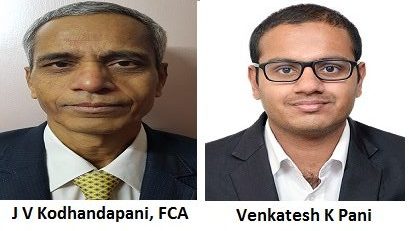









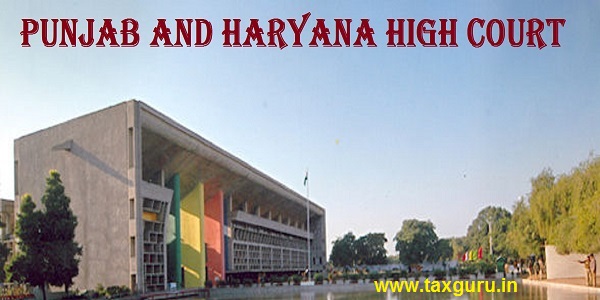
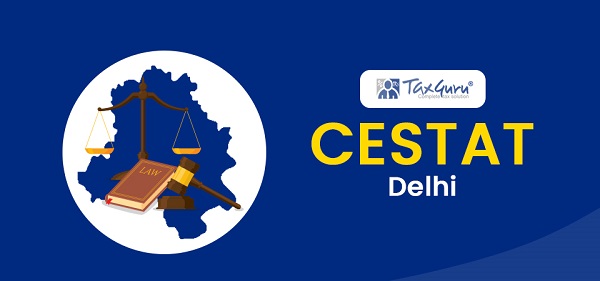

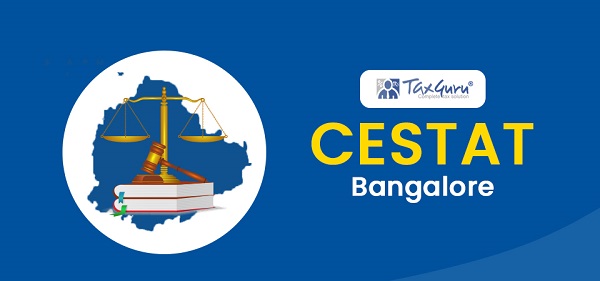















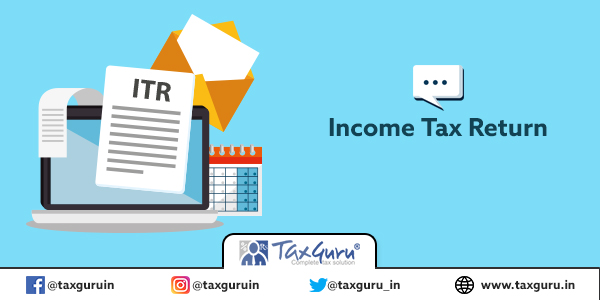
The appeal cases, heard and remanded for fresh adjudication by higher appeal forums to lower appeal forums are eligible. However, if the case is remanded back to the Assessing Officer fresh assessment is not eligible. This is for the reason that the AO is not an Appellate Authority and the proceedings before him are not appeal proceedings. He only gives effect to the order of the Higher Appellate forums. Such cases before the AO do not qualify for the benefit under Teh Direct Taxes Vivad se Vishwas Act, 2020. Venkatesh